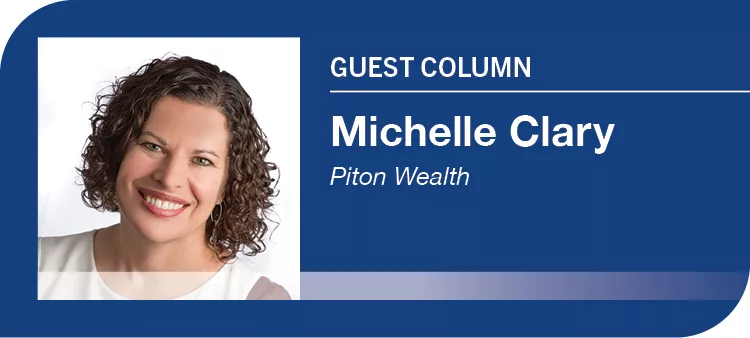
Home » Prepare and plan for how 10-year rule can affect inherited IRAs
Prepare and plan for how 10-year rule can affect inherited IRAs

October 11, 2023
The legislation known as the Secure Act of 2019 changed the tax rules for heirs of an individual retirement account (IRA) from someone who passed away on Jan. 1, 2020, or later.
First, it divided these heirs into three different types: eligible designated beneficiaries (EDB), non-designated beneficiaries (NDB) and noneligible designated beneficiaries (NEDB). The Secure Act also created what is known as the 10-year rule, which applies only to NEDBs.
The legislation sets out deadlines for NEDBs to empty out their inherited IRA or face tax penalties. Confusion followed about when the tax penalties would be imposed. In response to the confusion, the IRS has updated its policies about it every year since.
Who are the NEDBs?
The new deadlines for emptying an inherited IRA apply to only one of three categories of heirs, the NEDB. NEDB includes children, grandchildren and other individual heirs over the age of 21. Spouses, children under the age of 21, estates, and charities fall into the other categories, and the new 10-year payout rule does not apply to them.
When are the RMDs?
The IRS regularly imposes an annual required minimum distribution (RMD) on older owners of retirement accounts. The IRS imposes this requirement to ensure that they receive taxes in a timely manner. The IRS most often calculates RMDs based on the age and life expectancy of the account owner.
When the account passes to an heir, the age and life expectancy of the heir can factor into the RMD. Here is where the 2019 Secure Act added a 10-year rule for NEDBs and confusion ensued.
If the heir inherited an IRA from someone who died Jan. 1, 2020, or later and had not started taking RMDs (currently starting the year after they turn 73), the NEDB now had to empty the IRA within 10 years or face a tax penalty.
If, however, they inherited from someone who was already responsible for the RMD, the heir has to take an annual RMD as well as ensure that the account is emptied within 10 years. De-tails were very unclear regarding this requirement, so the IRS subsequently waived the penalty for the missed RMDs in the tax years 2021, 2022 and 2023. The penalty is scheduled to be in effect for 2024 and beyond.
Which accounts?
Not all inherited IRA accounts are affected the same way. Heirs to a Roth IRA are subject to the 10-year cleanout rule, but they are not required to take the annual RMD, as heirs to a traditional IRA are.
What to consider
New tax laws can seem overwhelming, all the more so when the IRS itself has been rolling out updates and changes to the rules over multiple years. Nevertheless, the changes can cost people when they do not expect it or it can impact their financial well-being, so consider at least the following:
- Are you or someone you know the heir to a retirement account of someone who died in 2020 or later?
- If so, do you know what kind of account (traditional or Roth, for example) and what the RMDs have been and will be for the account?
- Even when the IRS has waived the penalty for a missed RMD, it can still make financial sense to make a distribution. Deferring the withdrawal could contribute to greater taxes later, for example.
- Because the IRS made some of its waivers retroactive, a taxpayer can have options for RMDs already taken or penalized, but these opportunities have their own deadlines.
- The changes in the rules also can mean that the new withdrawal requirements can have an impact on other areas of finance. Some components of a retirement plan are typically calibrated to life expectancy, for example. The 10-year rule could change when funds are available within this span, and so it may be prudent to reconfigure the plan and resources accordingly.
Prepare a comprehensive plan
If any of the above considerations or any of the information in this issue resonates with you, I encourage you to work with appropriate professionals who can determine the best actions for your specific financial situation. Especially because the IRS has been releasing updates and revisions over multiple years and additional updates are expected. This should be a professional who is up to date on these developments and who will continue to be aware of changes that will come in the future.
When it comes to the 10-year rule, preparation can include making sure that someone, such as a financial planning professional, analyzes how the developments in this rule can affect other financial resources. The new rules can also mean that financial plans for your future will work better with adjustments. The currently designated beneficiaries for one or more retirement accounts, for example, might fare better if recalibrated based on the new rules.
Prepare and plan, and especially with ongoing complex changes like those described in this column, please consult a professional.
Michelle Clary is a certified financial planner, chartered financial consultant, chartered life underwriter, retirement income certified professional and accredited estate planner. She is founder and chief executive officer/senior wealth advisor of Piton Wealth in Kennewick and Kalispell, Montana.
Senior Times Opinion Taxes
KEYWORDS october 2023





